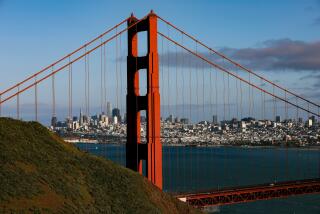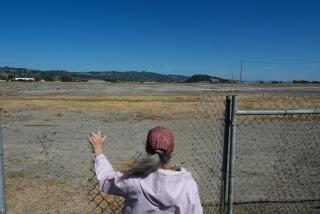Radiation from Fukushima plant detected in Sacramento, EPA says
A minuscule amount of radiation from the stricken Fukushima Daiichi nuclear reactor in Japan was detected in Sacramento but at such a low level that it posed no threat to human health, the U.S. Environmental Protection Agency said Friday afternoon.
One station in Sacramento detected “minuscule quantities” of a radioactive isotope, xenon-133, that scientists said they believed came from the reactors at the stricken Fukushima plant.
Photos: In Japan, life amid crisis
But the level detected would result in a “dose rate approximately one-millionth of the dose rate that a person normally receives from rocks, bricks, the sun and other natural sources,” according to an EPA statement.
Xenon-133 is a radioactive gas created during nuclear fission.
The detection of the xenon-133 came from a radiation monitoring system run by the U.S. Department of Energy able to “detect tiny quantities of radioisotopes that might indicate an underground nuclear test on the other side of the world,” the statement said. “These detectors are extremely sensitive and can detect minute amounts of radioactive materials.”
A separate detection system run by the EPA, known as RadNet, also has shown no harmful levels of radiation coming to the United States. The system was developed in the 1950s during the Cold War.
“As far as our monitors go, we have not detected any increases beyond what you’d expect historically,” said Philip Fine, atmospheric-measurements manager of the South Coast Air Quality Management District, the smog control agency for Los Angeles, Orange, Riverside and San Bernardino counties.
Experts have anticipated small amounts of radioactive isotopes from the stricken Fukushima Daiichi power plant to blow over to California as soon as Friday but said they expected that the radiation to be well within safe limits.
The South Coast Air Quality Management District has detectors in Anaheim, Fontana and Riverside monitoring airborne radiation; the California Department of Public Health operates a fourth detector in the downtown Los Angeles area.
Officials on Thursday said whatever radiation wafted into the atmosphere would be greatly diluted by the time it travels 5,000 miles to California.
“The basic physics and basic science really tells us that there can’t be any risk or harm to anyone here in the United States, or Hawaii, or any of the other [U.S.] territories,” Gregory Jaczko, chairman of the U.S. Nuclear Regulatory Commission, said Thursday.
There is no sign that harmful levels of radiation are drifting into Tokyo or other large cities in Japan, according to the United Nations and World Health Organization officials.
The EPA said U.S. air monitors detected trace amounts of radioactive particles in 1986, after the explosion of the Chernobyl nuclear power plant in Ukraine. But the amounts detected were one-thousandth the level of what a typical person would absorb from natural sources in one year.
ron.lin@latimes.com
More to Read
Sign up for Essential California
The most important California stories and recommendations in your inbox every morning.
You may occasionally receive promotional content from the Los Angeles Times.











